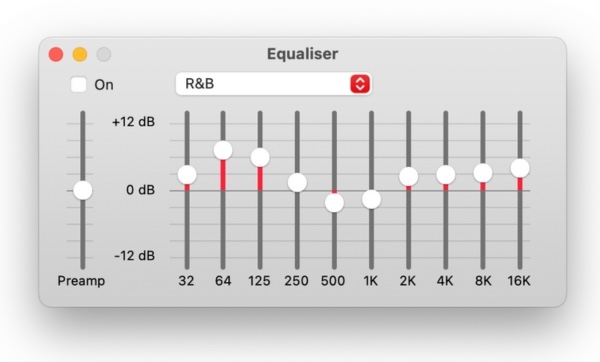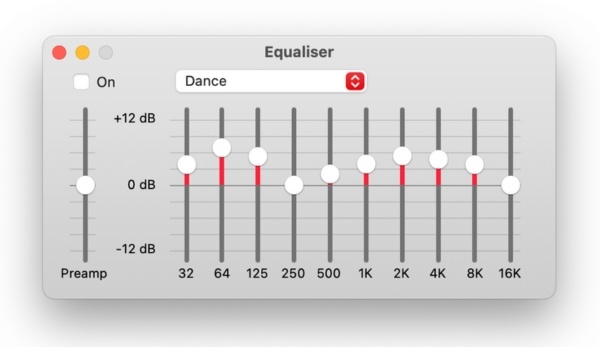The Best Equalizer Settings for Bass
Achieving the best equalizer settings for bass is a challenge that many bassheads face. However you like your audio output, adjusting your EQ to get the perfect balance can be a challenge.
The goal is to enhance the bass without making it sound muddy or overpowering, which is especially tricky with bass-heavy genres. Each audio device, from headphones to speakers, can have its own characteristics, meaning the ideal EQ settings may vary depending on your equipment.
Fortunately, mastering your equalizer isn’t as challenging as it might seem. By understanding the frequency ranges that make up bass and experimenting with your settings, you can create a sound profile that enhances your music.
This guide will walk you through the best equalizer settings for bass and offer tips for optimizing your sound across various genres, so you can enjoy crisp, powerful bass tailored to your personal taste.

Understanding Bass Frequencies
Bass frequencies typically fall within the range of 20Hz to 200Hz, and to better understand this, it’s important to know what Hertz (Hz) represents. Hertz is the unit of measurement for frequency, indicating the number of vibrations per second in a sound wave.
Each musical note corresponds to a specific frequency, and the bass frequencies play a crucial role in the foundation of most music. These frequencies are responsible for the sounds that give music its power and depth.
Key Frequency Ranges for Bass:
- Sub-Bass (20Hz – 50Hz): This range has the deepest bass sounds hat are often felt more than heard. It’s responsible for the rumbling, low-end vibrations that add a powerful foundation to music. For this, you need a high-quality subwoofer, as it can lead to a muddy, indistinct sound if your subwoofer isn’t up to scratch.
- Mid-Bass (50Hz – 100Hz): This range is where punchy basslines reside. It’s the sweet spot for kick drums, creating that hard-hitting thump that makes dance floors shake. Boosting in this range can give your music energy and presence without overwhelming the mix.
- Upper Bass (100Hz – 200Hz): The upper bass is where bass-heavy instruments, such as bass guitars and pianos, sit. Enhancing these frequencies can bring out the warmth and depth of these instruments, making them more present in the mix without clashing with the midrange frequencies.
Tips for Fine-Tuning Your Bass
When it comes to fine-tuning your bass, it’s often better to cut frequencies rather than boost them. Cutting frequencies above your bass range allows the bass to stand out more without overwhelming the overall mix. This helps avoid distortion or muddiness that you can get when too many low frequencies are boosted.

For example, by reducing the higher frequencies in the mid-bass and upper bass ranges, you can make the low-end frequencies more prominent without causing the sound to become distorted or too boomy.
Another key consideration is avoiding muddy sound. If you boost frequencies below 50Hz, the sound can become excessively rumbling and lose clarity. To prevent this, many listeners choose to cut off or reduce the sub-bass frequencies unless they’re using a high-quality subwoofer designed to handle those deep rumblings.
If you decide to boost your bass frequencies, always monitor the clipping indicator on your equalizer. Clipping occurs when the audio signal becomes too strong, causing distortion. If the clipping light blinks, it’s a sign that you’ve pushed the bass too far, and you’ll need to lower the boost slightly to maintain clean audio.
Experiment and Customize Your Settings
One of the most important aspects of finding the best equalizer settings for bass is experimentation. While there are general guidelines, the ideal EQ settings ultimately depend on personal preference and the specific audio equipment you’re using.
Different genres of music, listening environments, and even individual hearing sensitivities can all influence how you perceive bass. So, take time to adjust your settings, don’t rush and listen carefully to how each change affects the sound.
Start by tweaking the bass frequencies in small increments and testing how they sound with your favorite tracks. Let’s say you’re listening to R&B, boosting the 64Hz range might help bring out the deep basslines, while adjusting the 125Hz range might add punch to the drums.

For Dance Music, you might want to boost 32Hz slightly, but try experimenting for different genres as bass is different and will need different EQ settings for the best bass.
Always remember that your audio device plays a big role in how the settings will translate. The bass on high-end headphones, for instance, might sound different than on budget speakers or a home theater system.
Adjust your EQ for the specific device you’re using, and don’t hesitate to revisit the settings as your equipment or listening habits evolve. Customizing your EQ settings regularly ensures you get the most out of your music, allowing you to get powerful and clear bass.
The Best Equalizer Settings for Bass
Mastering the best equalizer settings for bass will significantly enhance your music listening experience. By understanding the frequency ranges, applying key tips for fine-tuning, and experimenting with your settings, you can create a personalized sound profile that brings out the best in bass-heavy tracks.
Remember, EQ adjustments are subjective, so what works for one listener may not suit another. Take the time to find what sounds best for you, keeping in mind the type of music you listen to and the equipment you’re using.
Check out more from our Soundrating Blog
Mastering Sound: The Best EQ Settings for Music, Movies, and More
Best Equalizer Settings for Car Audio
Unlocking Subwoofer Room Gain: What It Is and How to Maximize It

I am a passionate and skilled car audio enthusiast with 15 years of experience in the industry. My journey started when I replaced my first set of factory car speakers, sparking a deep love for high-quality sound. Since then, I have worked as a representative for renowned brands like Kenwood and Alpine.
With a background in both retail and distribution, I have developed a comprehensive understanding of the car audio market. Currently a certified (MECP) installer in the Mobile Electronics industry, my expertise lies in delivering top-notch audio installations. My knowledge, coupled with my genuine passion, makes me the go-to professional for all car audio needs.
